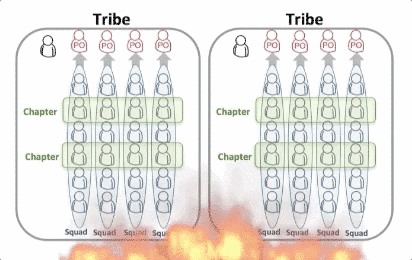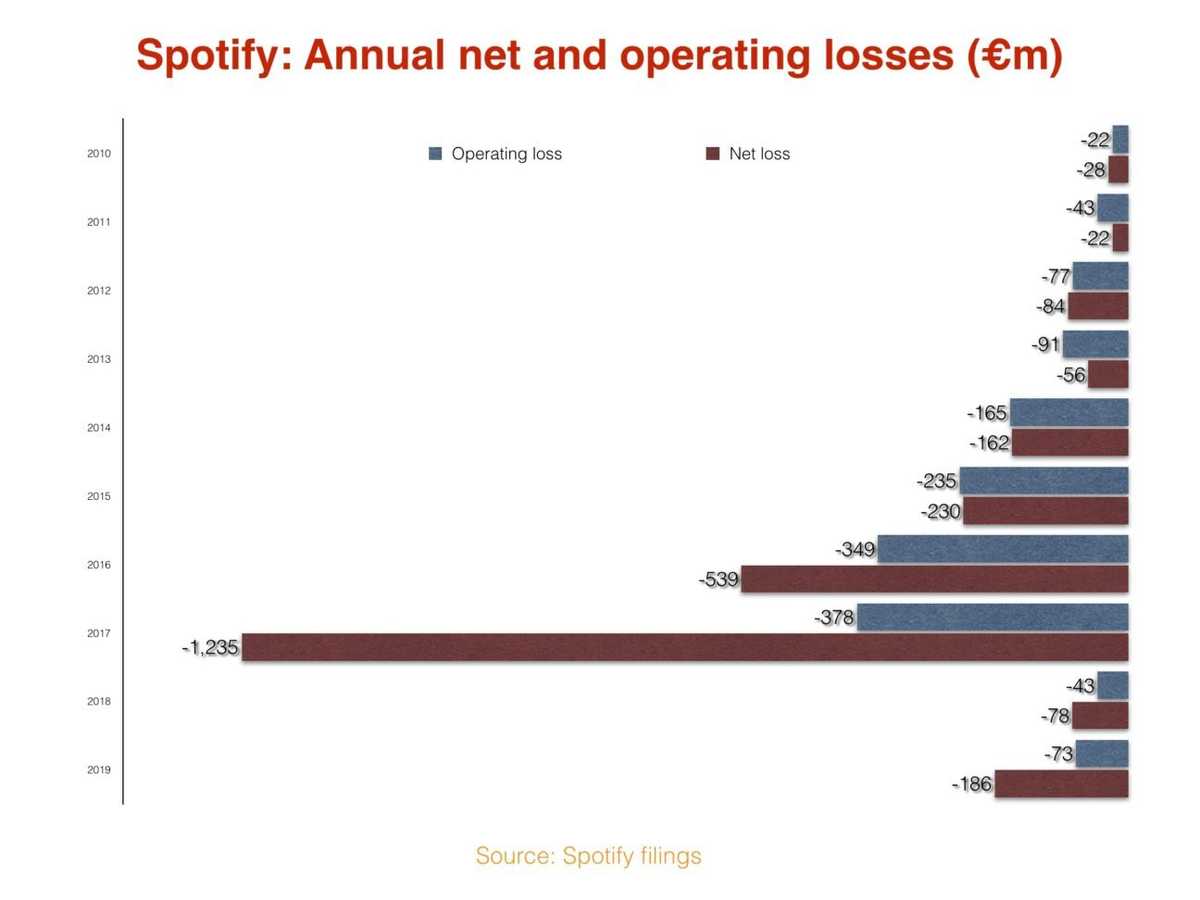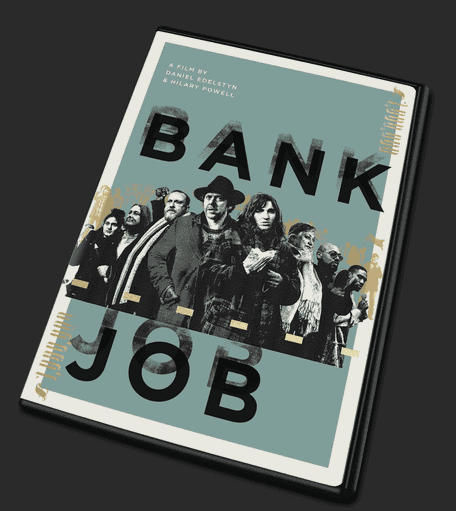#9 Design a kickass team

Note: This is the ninth post of the book after the introduction. If you’re new to the book, start with the introduction. Or visit the full table of contents.
There’s a lot of stuff out there about lean startup — everything in-fact. If you just want to know how to generate a bunch of ideas, test them cheap and quick then how to create a great pitch deck for investors, you’re golden. There’s plenty of success stories branching from the one and only Eric Ries’ blog on lean startup still in its original form. In the past when teaching about lean innovation, we’ve used examples like the founders of Buffer — the social media management platform, to illustrate how you can prove product market fit quickly and with little or no money at all, given the number of free tools these days. Want us to come teach you lean principles in a day? Sure, we can do that, it’s simple, give me or Phil a shout and we’ll set it up.
Buffer’s story of how they went from idea to paying customers in 7 weeks, much like every other aspect of lean start-up, is well documented. There’s such an amazing global community of people out there willing and wanting to share learnings it’s a wonder academia has survived in its current incarnation as long as it has. Yet still, annual university tuition in the UK is currently £9,250 per year. Excuse me, but, fuck that. More people should be incensed by this than appear to be. I’m a HUGE advocate of lifelong learning, but university education was once free in the UK and still is in many other countries. Putting a price on it drives further inequality and class division. But! The great thing is, everyone is a content creator these days, people can freely share what they know or find better ways to learn than being lectured in a classroom with outdated content and outmoded methods of delivery.
The rate at which economies, sectors, industries are evolving leaves the curriculum, teaching methods and outcomes for students languishing in its wake. By the time a data scientist has finished in academia, quantum will have changed the game. By the time a lawyer has passed the bar, smart contracts on the blockchain will be regulating. By the time a designer has learnt their art, the interface is voice — or thought (see Elon Musk’s Neuralink). By the time a consultant has spent ten years learning to deliver the same outmoded change methodologies — they’re redundant.
The pace of change is outstripping our ability to learn (at least in the sense of outdated traditional academic models). This raises questions not just about our ability to solve complex business problems, but the knock on effect in developing the skills and capabilities to continue to do so. I’m rushing ahead though — this post is about how to embed purpose in more than just your initial idea, maintaining your aspirations for the long term as you scale.
Summary of Neuralink’s progress (if you have 14min to kill).
Side note — there’s a lot of videos and links in this book, and it was pointed out that despite great content, some people just don’t have time to read it all, so we’re working on a TLDR version. Watch, listen to, quickly appraise this space — depending on whether we create audio, a new podcast or summary. Incidentally we’re also putting together a resource compendium of everything we talk about in the book + other golden nuggets we’ve seen and used ourselves throughout our careers. Sign-up to the newsletter and you’ll get it when it goes live.
Purpose as you grow
So what’s the beef with just smashing out an idea based on lean startup? Nothing at all. A valid thing, though it takes more than that if you want to embed purpose, first into your idea, then maintain it in your business model and governance. To understand why it’s a problem if you don’t think about purpose over the lifetime of a business, you can look at the subtext around business change and the start-up economy. The need for ‘culture change’ and corporate’s view of disruptive business. What do I mean — well I briefly mention this in #3 Success defines us, to put a fine point on it large businesses want what start-ups have. Ie the ability to adapt and evolve quickly inline with a changing market. Yet start-ups invariably take money from old school business when they seek investment and mentoring, and glean advice from even older school NEDs when they’re growing. They get the juice to get going and then continue to scale a business, just like every other business in order to achieve market potential as quickly as possible, get a fat valuation and exit.
This rapid scaling, with little thought for structure, culture, long termism or legacy (because you’re invariably going for quick exit) will leave behind a jaded workforce and an unwieldy mash of rapidly recruited teams borne of vast injections of capital. The ‘no hierarchy’ idea is no-longer a reality, just a hangover from when there were 50 of you and you all knew each other’s names. There’s now actually a lot of process and systems forced into the business, because you genuinely do need agreed ways of working to maintain stability, so everyone knows what they’re doing and why. Your investors, NEDs and new management have told you to get it done and you do, using tried and tested methods.
Might be some of this hastily crowbarred-in structure works. But it might be a lot of people weren’t part of the decision making, because you’ve built a carbon copy of every other ‘revenue only’, hierarchy-driven, commercial business and there’s a lot of resentment and pushback on new processes and systems. Talent leaves, you lose your culture etc etc, same old story. But hey, if you’ve made your money and got acquired, who cares? Well indeed, then this article and this book, possibly aren’t for you. On a lighter (funnier?) note, here’s what happens when you take a product to market with, without user testing and co-creation in the design process.
Business superpowers & team design
Something we did early on as founders of Po3 was to run a ‘Superpowers’ workshop. The name of the workshop might put people off, sounds like self help ‘woo woo’ to some (I didn’t know ‘woo woo’ was a thing but I’ve heard it twice in two days now). It’s not. It’s actually about building sustainable ways of working with your team. When you’re (hopefully) building autonomous, multidisciplinary teams as your foundation, you need to know what people’s strengths are and play to them, so they’re happy and productive.
Conversely you also need to know where there are gaps, or where gaps might appear in the future as the business develops. For instance you wouldn’t build a restaurant business with only chefs. What an angry place that would be, and besides who’s going to serve the food? Who’s managing the supply chain? Po3 Co-founder Phil Sherwin-Nicholls does an excellent talk on service design using this analogy, it’s far better than my poor effort. Let us know if you want him to come run it for you eh, he’s very obliging, just did so for the lovely people at booking.com.
You need complementary skill-sets AND personalities for your founding team. Aside from hard skills (code, data etc) there are a number of archetype personalities that can be used to define what you’re good at and conversely, not so. Helps that you know the stuff you need to work on in yourself or tasks you need to stay away from, because someone else will do a better job. These are 6 out of 21 archetypes pulled from an IDEOU blog on exactly this workshop:
- Empathy:
Empathizers have remarkable powers of perception when it comes to other people. With antennae up, they pick up on the needs and emotions around them, even when no one is saying anything. - Experimentation:
Experimenters have a prototyping mindset. They’re able to rapidly generate many ideas, zero in on the most promising ones, put them into motion, and refine along the way. They have high standards, but they’re also not afraid of embarrassment or failure. - Grit:
People with Grit have extraordinary levels of endurance, tenacity, and focus. They are the quiet engine of the team—able to keep pushing themselves and the work until it is truly done. They pace themselves for the long haul, ignoring momentary setbacks and the lure of procrastination. - Provocation:
Provocateurs have a super thick skin. They are much more concerned with being effective than with being liked. And they routinely push the team outside its comfort zone or break up consensus by playing devil’s advocate. - Systems Thinking:
Systems Thinkers are fearless about the unknown. They travel to the outer edges of a problem, then work their way back to reveal all the parts and how they connect. They can see the forest and the trees—and even the underground root system. - Vision:
Visionaries have a kind of crystal ball in their brains. They can see a future destination in vivid colour. And while some details about how to get there may be hazy, the visionary’s account is more than enough to start the team on its way.
Through a process of self analysis and collaborative feedback with the team, you work out what you’re honestly good at — and not so. This really is a hugely important thing for team development and productivity. If you’re at all serious about founding a business with longevity and maintaining purpose, you need these activities to constantly ensure your team are the best they can be.
It’s like 45min though, so set aside your lunch!
We found high levels of ‘experimentation’ superpowers in our business. Perhaps not surprising, given our test and learn approach. But we also found that sometimes it led to moving almost too quickly. Sounds like we’re blowing our own horn right? Well, it’s a blessing and a curse. If you have a problem, and someone in the team has definitively reached the answer by moving faster than others, then solving that problem quickly helps the whole team move forward yes? But is that for the best in the long-term? How did that make others feel? What are the knock on effects for team morale and enabling everyone to have a voice. Will it create communication barriers and bigger problems down the line?
It’s not rocket science, but you just need to be aware of it, you need to bring everyone along on the process you went through to get to the solution. Educate them. It’s not always intuitive when you want to move quickly, education can take a little time to do well. This is basically an analogy for the whole of our ethos, think about what you do and how it affects others, your team, your community, other communities — expand ad infinitum.
“Change starts with education”
Bas Van Abel — Fairphone founder
Your people are the bedrock of your business, purpose doesn’t exist at all if not in them. As you set the foundations of a high performing team, you also need to consider how this builds over time. There are of course, as you’d expect some great resources from the people team at Google and re:Work which help you establish what makes a great team and how maintain it. A lot of research underpins this thinking, this paragraph sums up nicely what we’re saying:
“After all, the root of performance variability lies within human nature itself. Teams are composed of individuals with diverging needs related to morale, motivation, and clarity — all of which lead to varying degrees of performance.”
Gallup research
I disagree with some of what the research says, mainly in its phrasing and onus on the need to find great ‘managers’. We strongly believe that no-one in the right environment needs managing. Guidance, leadership, mentoring — yes, no-one wants to be managed. Managing down and reporting up is redundant. Jos De Blok, Founder of Buurtzorg — a highly autonomous self managing organisation (perhaps the best, most well-known in the world) told me that he was simply a mentor, a figurehead. What else would he be in an autonomous business? Maybe you think no-one cares about titles but as ever, semantics are extremely important. It’s a communication of hierarchy, it plants a thought, an idea and ideas are powerful.
Spotify schmotify
Everyone wants to be a tech company these days. Law firms are tech companies, cleaners are tech companies, restaurateurs are tech companies. What they mean is they want to use the same thinking that’s applied to building a tech product, to their business product. So what they actually want is to have a product mindset and use technology to help deliver to market. When you get into the subject of building out a product organisation, or scaling a tech business, or whatever you want to call it, you’ll trip over what’s known as the Spotify model. Seemingly everyone in business who was going through a ‘digital transformation’ between 2016 and 2018 wanted to be like Spotify. At Decoded, a company where both founders of Po3 previously worked, we talked a LOT about Spotify to exemplify the product mindset / tech company approach people were chasing down.
I’m not gonna summarise the model myself because someone else has done it better. As pointed out earlier, if someone else does it better, let them. That someone else’s summary, is Jeremiah Lee’s. Jeremiah was a contract product manager at Spotify in the halcyon days when everyone is clamouring for a piece of Spotify’s action.
Here’s the Spotify model:
“Spotify had teams it called squads because it sounded cooler (not joking). A group of teams were organised into a department called a tribe. Each team was intended to be an autonomous mini-startup, with a product manager acting as mini-CEO for a feature area. The teams had designers and software engineers with a range of specialisations. The intent was that a team should have every skill necessary without needing to rely on another team for success.
Product managers had a traditional management structure. A product manager for a team reported to their department’s product director (“tribe lead”). Same for designers. Software engineers, however, were managed outside of the team structure.
“Chapter leads” managed software engineers specialising in a specific type of software development across the department. For example, all of the software engineers working on backend APIs across all the teams within the department would have one manager and all of the Android mobile engineers in the department would have a different manager. The intent was to allow engineers to be moved between teams within the department to best meet business requirements without them having to change managers.”
Since implementing the model it hasn’t been found to be as successful as everybody thought. Not an Agile Utopia at all. In fact Anders Ivarsson Co-Founder of the Spotify whitepaper said this:
“It worries me when people look at what we do and think it’s a framework they can just copy and implement. … We are really trying hard now to emphasise we have problems as well. It’s not all ‘shiny and everything works well and all our squads are super amazing”

Harsh burn bro
So what went wrong? Well, Jeremiah goes into a lot of detail on that too, one of his key points is that “Spotify fixated on team autonomy” and that’s a bad thing. 😱 Whut. Fucking hell, we’re like 15000 words into this book already. Hold your horses though, it’s not black and white. Autonomy as a concept does not = bad. Like all things, the devil is in the detail and how you implement it. Here’s what could’ve been done better:
- Autonomy requires alignment. Company priorities must be defined by leadership. Autonomy does not mean teams get to do whatever they want.
- Processes for cross-team collaboration must be defined. Autonomy does not mean leaving teams to self-organise every problem.
- How success is measured must be defined by leadership so people can effectively negotiate cross-team dependency prioritisation.
- Autonomy requires accountability. Product management is accountable for value. The team is accountable for delivering ‘done’ increments. Mature teams can justify their independence with their ability to articulate business value, risk, learning, and the next optimal move.
The original Spotify delivery model and team design was intended to be one of a series. It was scaled massively quickly when it was just v0.1 It was only an MVO then (minimum viable organisation). What I get from this is that for a ‘test and learn’ business, maybe they didn’t. Test and learn that is. Or they did but only applied this to the delivery of their digital service, NOT to the design of the organisation. And that’s basically the entire point of treating your business as a product organisation, you test, learn, iterate and optimise the team design and governance — just like everything else.
False economics
Another learning from Spotify could be that if you throw enough cash at a business it does just seem to keep going, completely defying economics. They’ve still yet to carve out a profit. Add to this that the entire music industry on the makers side (ie the musicians) are saying they’re still not getting paid and you really do wonder about the Spotify model, all of it. The business, team design, everything. I mean there’s an inquiry by the Department for Digital Culture Media & Sport into the music streaming industry and Spotify are in the docks, with Radiohead pointing a finger along with many other plaintiffs. I mean Ed O’brien seems like a nice guy, so he probably has a point to make.

I say Spotify’s model defies economics, but economics as this whole book kind of points out, is a funny old (rigged) game. If you haven’t heard of it, a great example is the story of The Bank Job. How a group of artists came to understand the unfair way in which debt is sold on at a fraction of its face value, while debtors are chased for the full amount and often left financially crippled. The artists once they understood this, used £20,000 to buy up and abolish £1.2m of local high interest debt. Right on.

Check out the book and upcoming film on The Bank Job
Is there a perfect team design? Not one single one no, each needs to be designed based on your proposition and market, it’s about designing based on principles (checkout #8 Purpose — why do we exist) then tailoring your design over-time to meet your employee, business and market needs. Autonomy as a principle can and does work when implemented right — Buurtzorg is again a classic example, as are elements of Netflix’s design principles that we talked about earlier in the book.
One thing is obvious though, that you need to think about your team and organisational design as you would any other product, test, learn, iterate, optimise. Evolve baby, it’s innovation eh. I’ll leave you with a great campaign from Fairphone on ‘Reimagine Innovation’. Bit obsessed with Fairphone, having recently met (Meeted? Google Meet) their design team and talked about their plans to change the world. We’re fully onboard with that idea.
Sign up for purpose
We're writing a book, a 'how-to' for the design and delivery of purpose driven, successful businesses.
Then we're giving it away, so anyone can use it.
